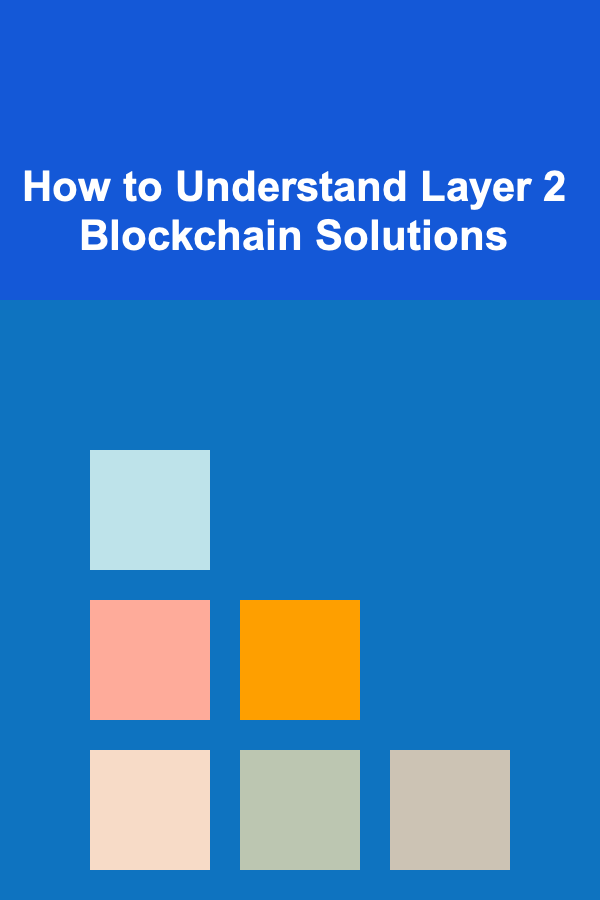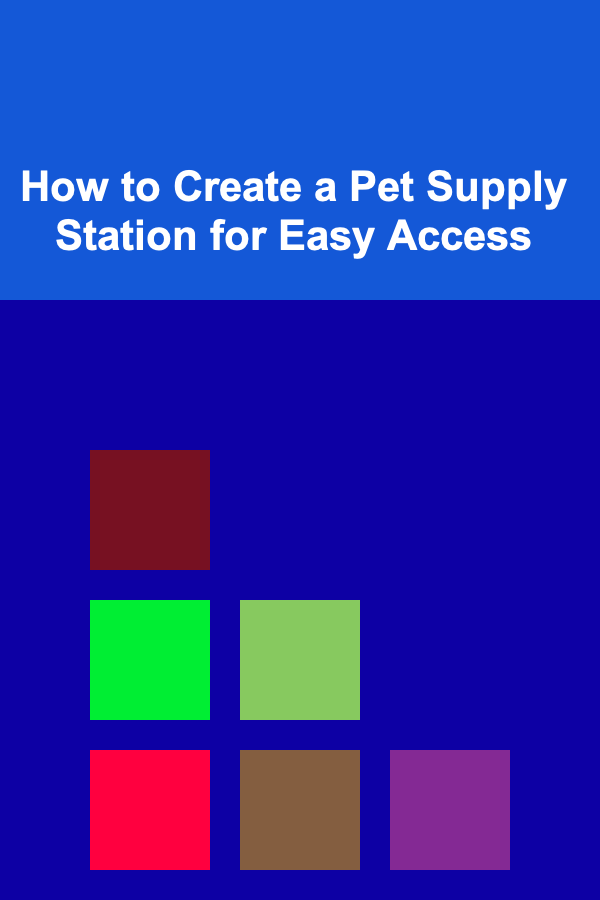
How to Understand Layer 2 Blockchain Solutions
ebook include PDF & Audio bundle (Micro Guide)
$12.99$10.99
Limited Time Offer! Order within the next:

Blockchain technology has significantly reshaped the landscape of digital finance, decentralized applications, and secure data management. While Layer 1 blockchains like Bitcoin and Ethereum have gained widespread recognition for their decentralized and transparent nature, they come with certain limitations in scalability, transaction speed, and cost. As a solution to these problems, Layer 2 blockchain solutions have emerged as an innovative means to enhance the performance of Layer 1 blockchains without compromising their core principles.
In this article, we will explore the concept of Layer 2 blockchain solutions, their importance in improving blockchain efficiency, and the various approaches and technologies that have been developed to address scalability, security, and user experience issues.
What is Layer 2 Blockchain?
To understand Layer 2 blockchain solutions, it is essential first to grasp the architecture of blockchain networks. Blockchains, in their simplest form, consist of a series of blocks linked together through cryptographic techniques. Each block contains transaction data, and these blocks are maintained in a distributed ledger across all participating nodes in the network.
Layer 1 vs. Layer 2 Blockchain
Layer 1 refers to the base blockchain protocols---such as Bitcoin, Ethereum, or Solana---that operate directly on the main chain. These blockchains process transactions, maintain consensus, and validate data within the network. The main issues with Layer 1 blockchains include:
- Scalability: Layer 1 blockchains have limitations in terms of transaction throughput. For instance, Bitcoin can handle around 7 transactions per second (TPS), and Ethereum around 30 TPS, which becomes a bottleneck during times of high demand.
- Transaction Fees: Due to network congestion, transaction fees can skyrocket on Layer 1, making it expensive for users to send tokens or interact with decentralized applications (dApps).
- Latency: With the increase in transaction volume, Layer 1 blockchains can experience delays, resulting in slower transaction finality and lower user experience.
Layer 2 solutions are built on top of Layer 1 blockchains to solve these issues by offloading some of the transaction processing and computations from the main chain, without sacrificing the core properties of decentralization, security, and immutability.
Importance of Layer 2 Blockchain Solutions
Layer 2 solutions are crucial for improving the scalability of blockchain networks. They enhance transaction throughput, reduce latency, and lower transaction costs, making blockchain technology more viable for large-scale use cases. These solutions are also key to unlocking the potential of blockchain beyond simple transactions, enabling complex decentralized applications (dApps), smart contracts, and other innovative solutions.
Benefits of Layer 2 Blockchain Solutions
- Scalability: Layer 2 solutions significantly increase the transaction throughput of blockchain networks, enabling them to handle a larger number of transactions per second. This scalability is essential for mass adoption, particularly for high-traffic applications such as decentralized finance (DeFi) platforms, gaming, and supply chain tracking.
- Cost Efficiency: By processing transactions off-chain or in a more efficient manner, Layer 2 solutions reduce transaction fees. This is especially important for users interacting with dApps that involve small value transfers or frequent microtransactions.
- Faster Transactions: Transactions on Layer 2 solutions can be processed more quickly than on Layer 1 chains, leading to lower latency and faster finality times. This is particularly important for applications that require near-instant transaction confirmation, such as gaming or real-time data processing.
- Enhanced User Experience: Layer 2 solutions provide a smoother user experience by addressing congestion on the main chain and providing faster transaction processing and reduced costs. This makes blockchain technology more accessible to mainstream users and businesses.
Types of Layer 2 Blockchain Solutions
Several Layer 2 solutions have been developed to address the scalability and efficiency challenges faced by Layer 1 blockchains. These solutions vary in their design, approach, and application, but they all aim to offload work from the main chain while maintaining the core principles of decentralization and security.
1. State Channels
State channels are a popular Layer 2 solution that enables two or more participants to conduct off-chain transactions, which are then recorded on the main blockchain at the end of the process. State channels work by creating a private channel between participants, where they can interact in real-time without incurring the costs and delays of on-chain transactions.
How State Channels Work
- Opening the Channel: Participants lock up a certain amount of cryptocurrency in a multi-signature wallet to open the channel. This wallet is controlled by the participants, and it ensures that the funds are secured during the transaction process.
- Off-Chain Transactions: Once the channel is open, participants can perform an unlimited number of transactions without broadcasting them to the main blockchain. These transactions are only known to the participants involved, and they can update the state of the channel by signing new transaction data.
- Closing the Channel: When the participants are done transacting, they can close the channel, and the final state of the transactions is recorded on the main blockchain. Only the opening and closing transactions are on-chain, significantly reducing the cost and time associated with multiple interactions.
Use Cases for State Channels
State channels are particularly useful for applications requiring frequent interactions, such as:
- Microtransactions in gaming, where users can send small amounts of tokens for in-game purchases or rewards.
- Payment Channels for peer-to-peer transfers, allowing users to send money quickly and with low fees.
2. Rollups
Rollups are a Layer 2 scaling solution that executes transactions off-chain while maintaining the security and decentralization of the underlying Layer 1 blockchain. Rollups process transactions in bulk, or "roll them up," and submit only a summary of these transactions to the main chain. There are two main types of rollups: Optimistic Rollups and Zero-Knowledge (ZK) Rollups.
Optimistic Rollups
Optimistic Rollups rely on the assumption that transactions are valid, and they only conduct fraud-proof checks when a dispute arises. If no one challenges a transaction, it is considered valid, allowing for high throughput and low fees.
- Benefits: They can be more cost-efficient than ZK Rollups and are easier to implement on existing blockchain networks like Ethereum.
- Drawbacks: Optimistic Rollups suffer from a delay in finality due to the time required for fraud-proof challenges.
ZK Rollups
ZK Rollups use zero-knowledge proofs to verify the correctness of transactions. In this case, all the transaction data is processed off-chain, but cryptographic proofs (known as SNARKs or STARKs) are submitted to the main chain to ensure the integrity of the data.
- Benefits: ZK Rollups offer faster finality and greater security compared to Optimistic Rollups, as the validity of transactions is verified immediately.
- Drawbacks: They are more complex to implement and can require more computational resources for generating zero-knowledge proofs.
Use Cases for Rollups
Rollups are ideal for applications that require both scalability and security, such as:
- Decentralized Finance (DeFi): Rollups can handle large volumes of transactions quickly and cost-effectively, making them a great fit for DeFi platforms that experience high traffic.
- NFT Marketplaces: Rollups can help manage the surge in transactions during periods of high demand for non-fungible tokens (NFTs).
3. Plasma
Plasma is a Layer 2 solution designed to improve scalability by creating child chains that are linked to the main blockchain. These child chains can process transactions independently of the main chain, while still relying on the main blockchain for security and finality.
How Plasma Works
- Child Chains: Plasma creates smaller child chains that are able to execute smart contracts and transactions without burdening the main chain.
- Commitment to Main Chain: After processing transactions off-chain, Plasma periodically submits a commitment of the child chain's state to the main chain. This ensures that the data is secure and immutable.
- Exit Mechanism: Plasma provides a mechanism for users to withdraw assets from the child chain to the main chain by submitting a proof to the main blockchain.
Use Cases for Plasma
Plasma is suited for applications where scalability is critical, but the need for high security and decentralization remains paramount. Some common use cases include:
- Supply Chain Tracking: Plasma can facilitate the tracking of goods and assets across multiple parties while reducing the cost of on-chain operations.
- Decentralized Exchanges (DEXs): Plasma can help manage large volumes of trades by processing them off-chain and committing the final state to the main chain.
4. Sidechains
Sidechains are independent blockchains that run parallel to a main chain (Layer 1). They are connected to the main chain through a two-way peg, allowing assets to move back and forth between the sidechain and the main chain. Unlike Plasma or Rollups, sidechains are not directly dependent on the security of the main chain, which provides more flexibility but also introduces additional risks.
Use Cases for Sidechains
Sidechains are often used for applications requiring high throughput or specific customizations. Examples include:
- Gaming: Sidechains can be tailored to specific gaming ecosystems, providing fast transactions and unique functionalities.
- Private Blockchains: Enterprises can use sidechains to maintain privacy and scalability while still interacting with the public blockchain for specific purposes.
Conclusion
Layer 2 blockchain solutions play a critical role in addressing the scalability, cost, and speed limitations of Layer 1 blockchains. By leveraging technologies like state channels, rollups, plasma, and sidechains, Layer 2 solutions help unlock the potential for large-scale blockchain adoption. As blockchain ecosystems continue to grow and evolve, Layer 2 solutions will remain essential in driving the future of decentralized applications, finance, and beyond.
Understanding Layer 2 solutions provides a deeper appreciation for the complexities of blockchain technology and its role in shaping the digital economy. As these solutions mature, they will pave the way for a more scalable, efficient, and accessible blockchain ecosystem that can support a wide range of applications, from payments to decentralized finance and beyond.

How to Create a Pet Supply Station for Easy Access
Read More
How to Organize Your Kitchen for a Seamless Move
Read More
How to Renovate Your Home's Windows for Better Energy Efficiency
Read More
How To Shoot Commercial Photography
Read More
How to Understand Blockchain Governance
Read More
How To Learn Basic Etiquette for 10 Countries
Read MoreOther Products

How to Create a Pet Supply Station for Easy Access
Read More
How to Organize Your Kitchen for a Seamless Move
Read More
How to Renovate Your Home's Windows for Better Energy Efficiency
Read More
How To Shoot Commercial Photography
Read More
How to Understand Blockchain Governance
Read More